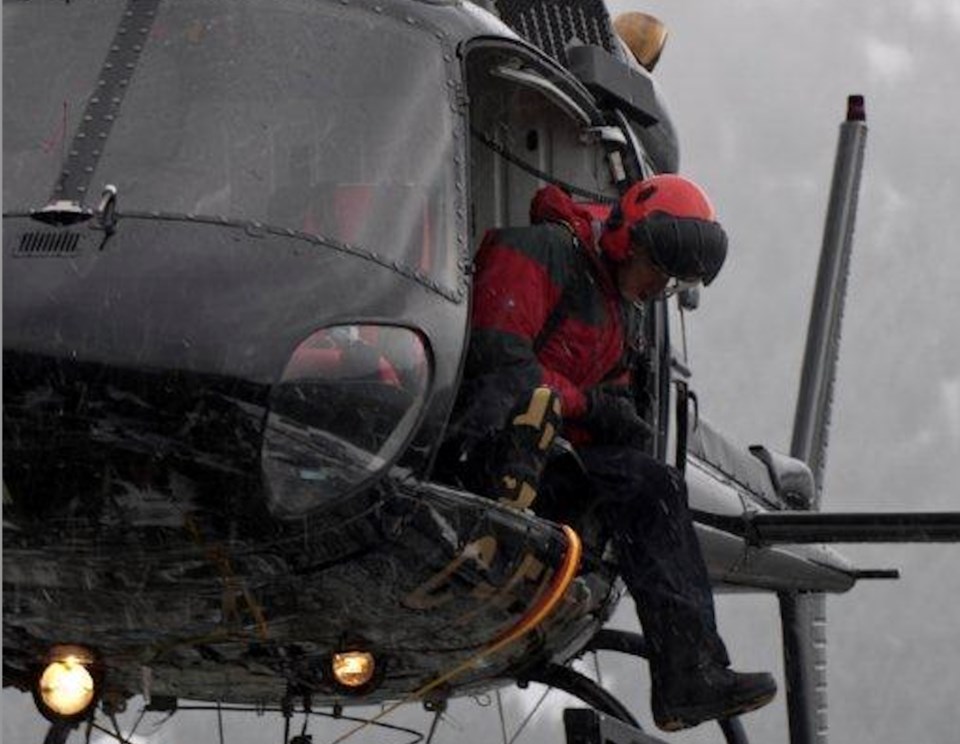The growing number of people heading into the Sea to Sky backcountry doesn’t appear to be slowing down, if Whistler Search and Rescue (WSAR) statistics are any indication.
Call volume was up for the third year in a row, as WSAR manager Brad Sills stated in the annual report he presented to members at the organization’s annual general meeting on Tuesday evening, March 21.
According to the report, WSAR received more than 115 requests for assistance between March 1, 2022 and March 1, 2023. Of those, 88 required crews to mobilize—a six-per-cent rise—while four calls were resolved by promoting self-rescue, helping lost callers download GPS apps and route-find, or offering basic medical instruction to treat symptoms like fatigue, dehydration or muscle strain. WSAR members also provided assistance to their counterparts in Pemberton on four occasions.
Staggeringly, Whistler SAR’s 88 mobilizations in 2022-23 represent a 60-per-cent jump from the 55 mobilizations volunteers recorded pre-pandemic, in the year ending on March 1, 2020. Whistler SAR volunteers fielded more than 110 requests for assistance in the 12-month period ending March 1, 2022, of which 83 required team mobilizations.
Whistler SAR’s busiest month of 2022 was March, when volunteers responded to 12 requests for assistance (seven of which came in during a four-day period from March 3 to 6), followed by August, with 11 calls. Phone lines were quietist in December, when volunteers responded to just three incidents—a “notable exception,” considering the holiday period “is usually very busy,” the report pointed out—compared to four calls WSAR responded to in November.
“In general, the distribution of call volume over the months was fairly evenly distributed,” the report stated.
Who did Whistler Search and Rescue help over the last year?
When it comes to rescues by activity, hikers represented the greatest proportion of search subjects, by far. They put in 33 calls for assistance, compared to 11 callouts for ski mountaineers, nine each for mountain bikers and climbers, and eight for snowmobilers. WSAR also responded to five missing persons calls, five requests for assistance from out-of-bounds snowboarders, and four from out-of-bounds skiers, with calls from trail runners, commercial operators and an inland water incident making up the balance. Four calls were deemed avalanche responses.
The year marked a return to normal in terms of mountain biking-related call volume: WSAR responded to just three incidents involving mountain bikes in 2021, compared to nine in 2019.
WSAR crews visited the Garibaldi Lake area most often, on 18 occasions, followed closely by the Spearhead Range, at 17 responses.
Throughout the 12 months, WSAR helped a total of 118 people: 71 (or about 60 per cent) of whom were male and 47 female.
“Ten years ago, the call volume was more heavily weighted to young males 15-25 years of age,” the report noted.
Last year, people between 26 and 30 years old accounted for the majority of search subjects (33), followed by the 31-to-40 cohort (30), and the 41-to-50 age group (18). Fourteen search subjects were between 21 and 25 years old, while WSAR helped eight subjects between 15 and 20 years old, eight more who were between 51 and 60; six who were in their 60s, and just one child who was 15 or younger.
According to anecdotal data, tourists visiting the Sea to Sky from other countries accounted for 33 of the 118 subjects (11 Americans, six Mexicans, five British, five Chinese, three from the Czech Republic, two Japanese, and one Spaniard). Twenty-nine locals found themselves in need of help throughout the 12 months, while 35 subjects listed addresses from elsewhere in B.C., and 18 resided elsewhere in Canada.





